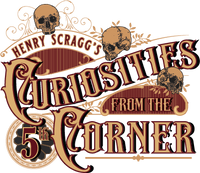
For centuries, shrunken heads — or tsantsas — have fascinated and disturbed people around the world. Found in museums, curiosity shops, and even pulp horror stories, these small, leathery human heads are often viewed through a lens of myth and spectacle. But the reality behind them is far more complex — rooted in spiritual belief, cultural identity, colonial exploitation, and modern ethical debates.
Shrunken heads originated among the Shuar, Achuar, Huambisa, and Aguaruna peoples of the Amazon rainforest, primarily in what is now Ecuador and northern Peru. For these Indigenous groups, tsantsas were not simply morbid trophies — they were sacred spiritual objects.
The Shuar believed that killing an enemy and shrinking their head captured their muisak — the avenging soul — preventing it from harming the killer. The head served both as protection and a symbol of personal and tribal strength. Contrary to popular belief, the process was highly ritualistic and not performed on a whim.
Creating a tsantsa was a painstaking and ceremonial task that could take several days. Here’s how it was traditionally done:
- Decapitation: After a ritual killing (usually in warfare or vengeance), the head was carefully removed.
- Skull Removal: An incision was made at the back of the neck, and the skin was peeled away from the skull, which was discarded.
- Boiling: The skin was boiled in a concoction of water and herbs, which helped preserve the tissue and darken it. Overboiling would ruin the head — it was a delicate balance.
- Shrinking: The head was dried using hot stones and sand, carefully molded to retain human features.
- Sealing: The eyes and mouth were sewn shut (or pinned with thorns), symbolically keeping the spirit trapped.
- Smoking & Finishing: The head was smoked over a fire and decorated with seeds, cords, or feathers.

The finished tsantsa was worn or displayed during ceremonies and could later be buried or kept as a spiritual ward.
While tsantsas have often been portrayed in the West as grisly souvenirs, for the tribes who created them, they held religious and cultural meaning. The process was believed to:
Prevent the spirit from taking revenge
Transfer the enemy's power to the killer
Demonstrate warrior strength and protect the community
They were never made for commerce — at least, not originally.
In the 19th and early 20th centuries, European and American explorers, missionaries, and collectors began acquiring tsantsas — often through trade, bribery, or theft. As demand grew, some tribes began making heads specifically for sale, including those made from slaves, prisoners, or even corpses. In some cases, animal heads (like sloths or monkeys) or fakes made from human remains were passed off as genuine.
Shrunken heads aren’t just creepy relics — they’re deeply tied to the belief systems and history of real communities. They remind us of how easily sacred traditions can be misunderstood, sensationalized, and commodified.

